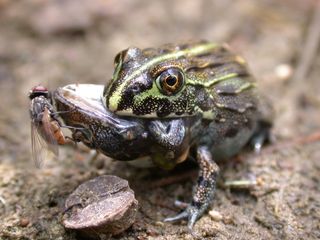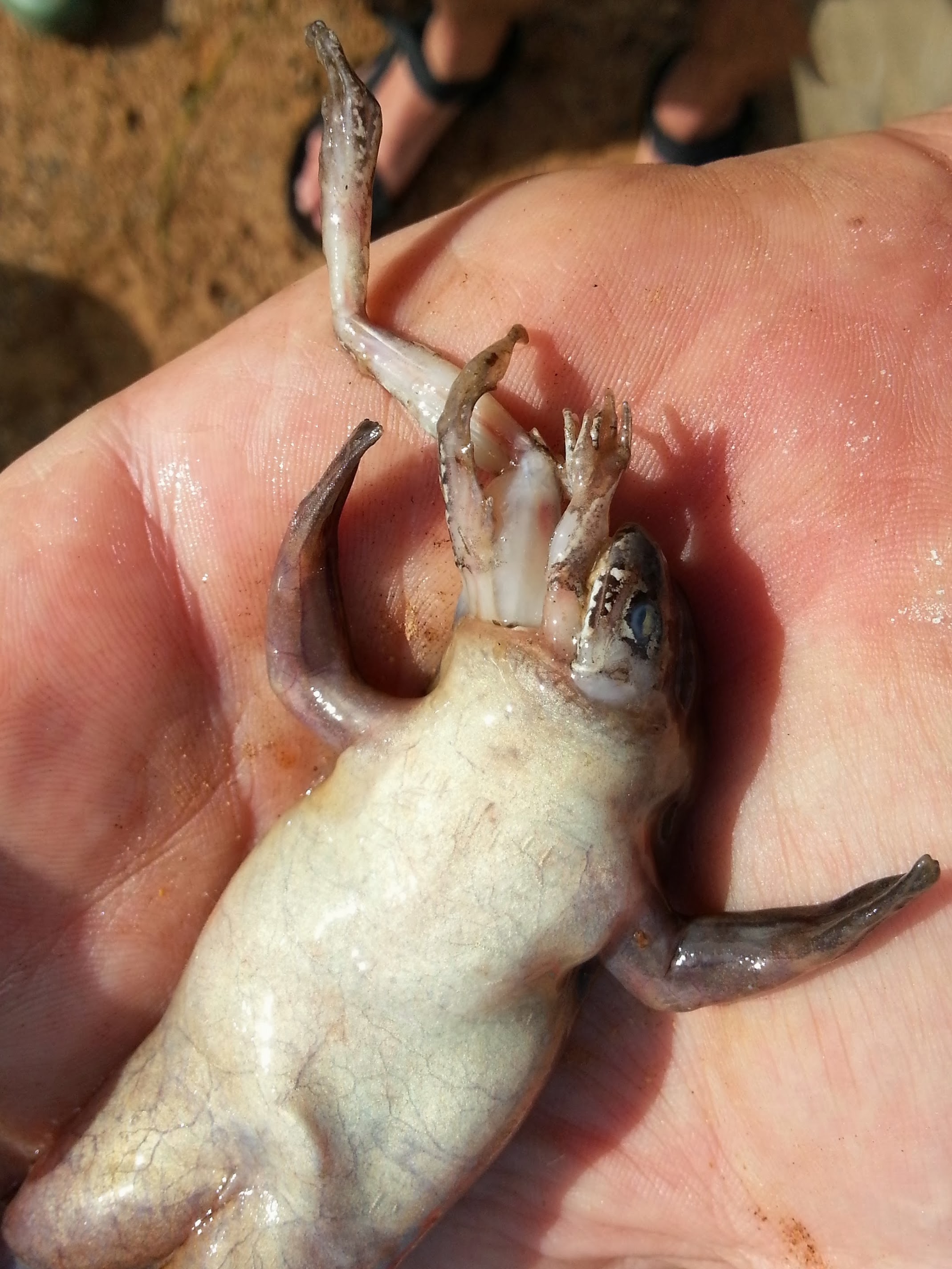Kermit the Frog Its Not Easy Being Mean
Kermit the Cannibal? Frogs Sometimes Eat Each Other

It's a frog-eat-frog world out there.
While it may seem like frogs are insectivores (a long tongue snatching a fly comes to mind), these amphibians are actually "generalist" carnivores. They will eat just about any small critter they can swallow, including other frogs, according to a new study.
It's no secret that frogs sometimes snack on their cousins. In fact, biologists have conducted studies showing that certain frogs eat their "siblings" (i.e., members of their own species), in addition to frogs of other species. [40 Freaky Frog Photos]
While scientists have known about this frog-on-frog predation, they haven't really looked at the reasons behind it. What factors make a frog want to hunt other frogs, for example? And are certain frogs more likely than others to gobble up their own kind?
To get to the bottom of the mystery, researchers in South Africa recently conducted a review of the available scientific literature on frog diets from all over the world. About one-fifth of the 355 studies included in the review mentioned frogs eating other frogs. The finding reinforced what the researchers already knew: It's not uncommon for a frog to chow down on another frog.

"It seems that frogs, if they are in the right place at the right time, will eat anything that moves," John Measey, a senior researcher at the Centre for Invasion Biology at Stellenbosch Universityin South Africa and lead author of the new study, told Live Science.
Alien amphibians
Measey said he became interested in frog diets while studying African clawed frogs at the Cape of Africa. He and his colleagues noticed that the clawed frogs, which are not native to the area, were gobbling up frogs that were native to the cape. This was troubling to the researchers, who wondered if the invasive clawed frogs might be more likely than other, local frogs to engage in anuraphagy, or frog-eating.
Measey and his colleagues from the University of Cape Town analyzed the 355 studies, looking for patterns. They looked at instances of anuraphagy in frog species that had invaded new habitats, and compared that to the same frogs' likelihood of eating other frogs when located in their own, native habitats.
"People who study invasive frogs have often said that one of the biggest effects of an invasive species is that they eat other frogs. So, we were interested in testing that as a hypothesis," Measey said.
The researchers found that frogs were about 40 percent more likely to eat other frogs when they were living in a non-native habitat compared to in their native habitat. That's a big discrepancy, one that Measey said is important, especially for those responsible for protecting native creatures from the effects of invasive species. Now, biologists or rangers who care for nature preserves can say with certainty that an invasive frog poses a threat to other species and may need to be removed, Measey said.
Frogs on the menu
In addition to finding that invasive frogs like snacking on other frogs, the researchers discovered a few other factors that can help predict how likely one frog species is to eat other frogs. For one thing, bigger frogs are more likely than smaller frogs to indulge in a frog-flavored meal. In fact, with every 1-millimeter (0.04 inches) increase in body size, a frog becomes 2.8 percent more likely to eat other frogs, the researchers found. [Eye-Swallowing and Mouth Birth: Freaky Facts About Frogs]
"If you have two frogs and one is 10 millimeters [0.4 inches] longer than the other, we would say the bigger one is 28 percent more likely to eat anurans [frogs] than the smaller one," Measey said.
And it's not just size that matters in anuraphagy. The researchers also looked at how other factors, including biodiversity, affect a frog's appetite for frogs. They found that, in places where there are many species of frogs living in one area, the amphibians are more likely to eat other frogs than if they lived in an area where there were only a few other species of anurans.
"You would be more likely to find frogs eating other frogs in the Amazon than you would in New York state. That seems to be because there are just more frogs in the Amazon," Measey said.
All this frog-eat-frog talk may seem morbid, but Measey said people should keep in mind that a frog eating a frog of a different species is a lot like a human eating a cow, or a chicken eating a bug. It's really just an example of one species eating another species, something that happens all the time. What's a bit harder to swallow is true frog cannibalism, which isn't unheard of but is also not as common among frogs as cross-species predation, Measey added.
In the studies the researchers reviewed, frogs ate members of their own species about a third as often as they ate frogs of species other than their own. Why do frogs engage in this behavior? Measey said he and his colleagues aren't sure. However, other researchers are starting to examine whether frogs can even distinguish between members of their own species and frogs of other species.
The new study was published Aug. 25 in the journal PeerJ.
Follow Elizabeth Palermo @ techEpalermo . Follow Live Science @livescience , Facebook & Google+ . Original article on Live Science.
gonzalezchereappleas.blogspot.com
Source: https://www.livescience.com/52086-frog-cannibalism-study.html
0 Response to "Kermit the Frog Its Not Easy Being Mean"
Post a Comment